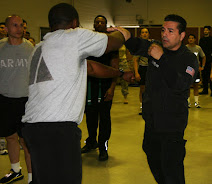The Evolution of Martial Arts: From Tradition to Reality-Based Combatives
Martial arts have undergone significant evolution over the centuries, adapting to societal changes, technological advancements, and shifts in combat priorities. The journey from traditional martial arts (TMA) to mixed martial arts (MMA) and, ultimately, to reality-based self-defense (RBSD) or combatives reflects the dynamic interplay between tradition, competition, and practicality.
1. The Origins of Traditional Martial Arts
Traditional martial arts, such as Karate, Kung Fu, Taekwondo, and Judo, emerged centuries ago in diverse cultures worldwide. Rooted in philosophy, discipline, and self-improvement, these arts often served multiple purposes:
- Combat effectiveness: Many TMAs were designed for self-defense or military applications.
- Cultural expression: Arts like Kung Fu were deeply intertwined with Chinese philosophy, medicine, and spirituality.
- Personal development: Martial arts emphasized mental discipline, respect, and personal growth, often tied to a moral code like Bushido in Japan.
Techniques in TMAs were often based on the weapons, terrain, and threats of the time. For example:
- Karate evolved on Okinawa, where weapon bans forced locals to develop empty-hand techniques.
- Capoeira in Brazil blended combat with dance to disguise its true nature under colonial scrutiny.
- Judo transformed the lethal throws of Jujitsu into a sport emphasizing technique and control.
Despite their practicality in their time, many TMAs evolved into more ritualized practices, focusing on forms (katas) and traditions rather than live, resistive combat.
2. The Rise of Mixed Martial Arts
The modern era of martial arts began with a question: What style is the most effective in a real fight? This inquiry gained global attention in the early 1990s with the birth of the Ultimate Fighting Championship (UFC). Early UFC events showcased fighters from different disciplines competing against one another, highlighting the strengths and limitations of traditional styles.
Key Lessons from Early MMA:
- Effectiveness of grappling: Royce Gracie demonstrated the dominance of Brazilian Jiu-Jitsu (BJJ), a grappling art that allowed smaller practitioners to defeat larger opponents.
- Limitations of rigid styles: Fighters who relied solely on traditional forms without adapting to live combat often struggled.
- Cross-training: Fighters began to combine striking (e.g., Muay Thai, Boxing) with grappling (e.g., BJJ, Wrestling), marking the birth of MMA as a hybrid combat sport.
As MMA grew, it became a proving ground for combat efficacy:
- Training emphasized sparring against resisting opponents, refining techniques under real pressure.
- Fighters developed well-rounded skill sets, capable of striking, clinching, and grappling.
MMA also highlighted a crucial shift: combat effectiveness wasn’t about adherence to tradition but adaptability, efficiency, and the ability to perform under stress.
3. The Emergence of Reality-Based Self-Defense and Combatives
While MMA honed techniques in controlled, competitive environments, it didn’t always address real-world violence, where there are no referees, weight classes, or rules. This gap gave rise to reality-based self-defense (RBSD) and combatives systems, which focus on practical, real-world scenarios rather than sport.
Key Features of RBSD and Combatives:
- Realistic Scenarios: Training simulates common threats like ambushes, knife attacks, or multiple assailants.
- Situational Awareness: Beyond physical techniques, RBSD emphasizes avoiding threats, de-escalation, and recognizing pre-assault cues.
- Gross Motor Skills: Techniques prioritize simplicity and effectiveness under adrenaline, as fine motor skills often deteriorate during high-stress situations.
- Weapon Integration: Unlike most TMAs and MMA, RBSD integrates training with knives, sticks, firearms, and improvised weapons.
- Mental Conditioning: Combatives systems prepare practitioners for the psychological realities of violence, including fear, chaos, and legal consequences.
Prominent Systems in RBSD and Combatives:
- Dark Gift Combat Fighting System: Developed form military, uses R.A.T. Rapid Assault Tactics From Paul Vunak, Apache Knife Fighting, Military Knife Fighting, balintawak and several other systems to be able to cover the 5 ranges of combat and the 5 weapons of combat.
- Krav Maga: Originating in Israel, Krav Maga focuses on neutralizing threats quickly and decisively, often with brutal efficiency.
- Systema: A Russian system emphasizing fluid movement, adaptability, and psychological resilience.
- Modern Combatives: Developed for military and law enforcement, incorporating techniques from MMA, traditional martial arts, and RBSD tailored for mission-specific needs.
4. Why the Evolution?
The shift from TMAs to MMA to RBSD reflects a growing emphasis on reality over tradition. Each stage of this evolution arose from a need to address new challenges:
- TMAs served their societies well in times of war and cultural preservation.
- MMA emerged as a testing ground for unarmed combat effectiveness in a controlled environment.
- RBSD/combatives filled the gap, addressing unpredictable, chaotic violence in modern society.
5. Lessons from Each Era
Each phase in the evolution of martial arts contributes valuable insights:
- From TMAs: Discipline, tradition, and structured learning remain foundational.
- From MMA: Sparring and pressure-testing are essential to develop real-world skills.
- From RBSD/Combatives: Practicality and adaptability in dynamic, high-stress situations take precedence over artistry.
6. The Modern Practitioner
Today’s martial artist often trains across these paradigms:
- MMA gyms incorporate traditional martial arts alongside modern techniques.
- Combatives schools adapt MMA principles for street scenarios.
- Many RBSD instructors emphasize cross-training in traditional and modern methods to offer comprehensive self-defense education.
The result is a well-rounded practitioner who values tradition but prioritizes effectiveness, blending the best of TMAs, MMA, and RBSD.
7. Looking Ahead
As society and threats continue to evolve, so will martial arts. Emerging trends include:
- Technology integration: VR and AI for training simulations.
- Scenario-based training: Expanding beyond physical threats to include psychological resilience.
- Hybrid approaches: Combining tradition, sport, and combatives for a balanced approach.
Mr. Traylor






Comments
Post a Comment